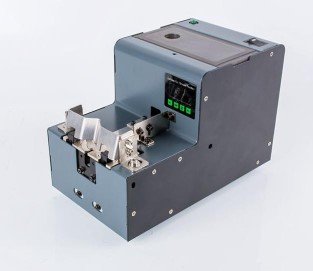Fasteners are an essential component in any mechanical assembly, and their proper installation plays a crucial role in ensuring quality, safety, and performance. However, fastening can also be a laborious and time-consuming process, especially for complex or high-volume applications.

That is where automatic screw feeders come in, offering a reliable, efficient, and cost-effective solution for fastener assembly. In this blog, we will explore the benefits of automatic screw feeders, how they work, and the different types available in the market.
What are Automatic Screw Feeders?
As the name suggests, automatic screw feeders are machines designed to dispense screws or other fasteners in a controlled and automated way. Instead of having an operator handle each fastener manually, an automatic screw feeder can present them one by one, align them correctly, and drive them into the target material with precision and consistency.
Automatic screw feeders are widely used in various industries, including automotive, aerospace, electronics, medical devices, construction, and more. They can handle different types of screws, bolts, nuts, dowels, or other fasteners, including small or delicate ones that may be challenging to handle manually.
Why use Automatic Screw Feeders?
There are several reasons why automatic screw feeders are becoming increasingly popular among manufacturers and assemblers. Here are some of the top benefits:
1. Increased Productivity: With an automatic screw feeder, you can dramatically reduce the time and effort needed to install fasteners. Instead of repeatedly picking up and positioning each screw, the machine can do it for you, increasing your throughput and allowing your workers to focus on other tasks.
2. Consistent Quality: By using an automatic screw feeder, you can ensure that each fastener is driven into the same depth and torque, providing more uniform and reliable results. This is especially important for safety-critical or high-performance applications where even small variations can have significant consequences.
3. Lower Costs: While the initial investment in an automatic screw feeder may seem significant, it can pay off quickly by saving you on labor costs, reducing errors and rework, and improving your overall efficiency.
4. Ergonomic Benefits: Since automatic screw feeders eliminate the need for repetitive motions and awkward postures, they can also help reduce the risk of work-related injuries and musculoskeletal disorders among your workers.
How do Automatic Screw Feeders work?
Automatic screw feeders typically consist of three main components: the feeder bowl, the feeding system, and the screwdriver. The feeder bowl is a bowl-shaped container that holds a large number of screws and allows them to orient themselves in a particular position, such as head-up or head-down.
The feeding system is responsible for picking up the screws from the feeder bowl one by one and feeding them to the screwdriver in a controlled manner. This system can use different mechanisms, such as vibratory feeders, pneumatic suction nozzles, or magnetic pick-and-place devices.
The screwdriver is the final component that drives the fasteners into the target material. This can be a manual or automatic tool, depending on the type of assembly and the desired level of automation.
Different Types of Automatic Screw Feeders
There are several types of automatic screw feeders available in the market, each with its unique features and benefits. Here are some of the most common ones:
1. Vibratory Bowl Feeders: These feeders use a bowl-shaped container and an electromagnetic drive to vibrate and align the screws. They are versatile, cost-effective, and can handle different types and sizes of fasteners.
2. Pneumatic Feeders: These use compressed air to suck the screws from the container and blow them through a tube to the screwdriver. They are fast, efficient, and ideal for delicate or small screws.
3. Magnetic Feeders: These use a magnetic field to attract and present the screws one by one, eliminating the need for mechanical parts. They are clean, accurate, and suitable for cleanroom environments.
4. Shuttle Feeders: These feeders have a mobile shuttle that moves back and forth between the feeder bowl and the screwdriver, picking up and dropping off the screws. They are ideal for long or heavy screws or when multiple screws need to be presented simultaneously.
5. Counting Machines: These machines use sensors or cameras to count the number of screws and ensure that the correct amount is dispensed into each assembly. They are useful for high-volume applications where accuracy and speed are critical.
Conclusion
Automatic screw feeders are a game-changer in fastener assembly, offering numerous benefits in terms of productivity, quality, cost, and ergonomics. By choosing the right type of feeder for your application and integrating it into your assembly process, you can streamline your workflow, reduce errors, and improve your bottom line.
At (brand name removed), we have been designing and manufacturing cutting-edge automatic screw feeders and feeding machines for over 30 years. Our products are known for their reliability, versatility, and customization options, and we are committed to providing the best solutions for our customers' needs.
If you want to learn more about our products or services, including our Automatic Screw Bowl Feeder or Fastener Counting Machine, please contact us today. We would be happy to discuss your requirements and offer you a customized solution that meets your goals and budget.